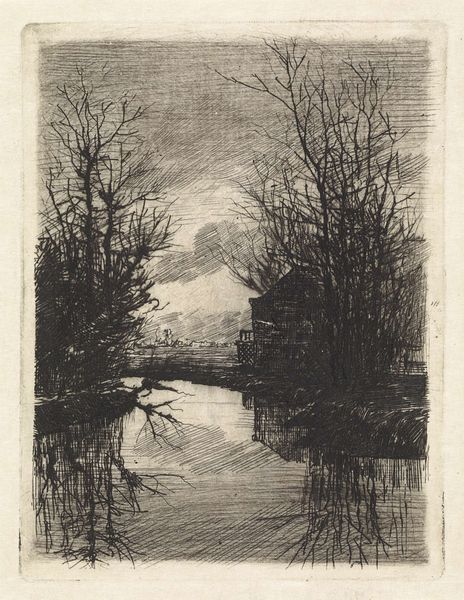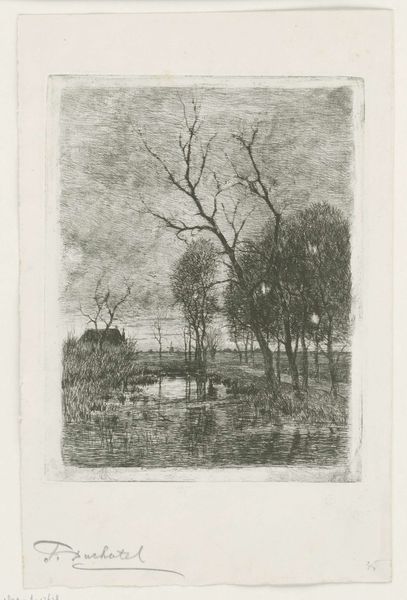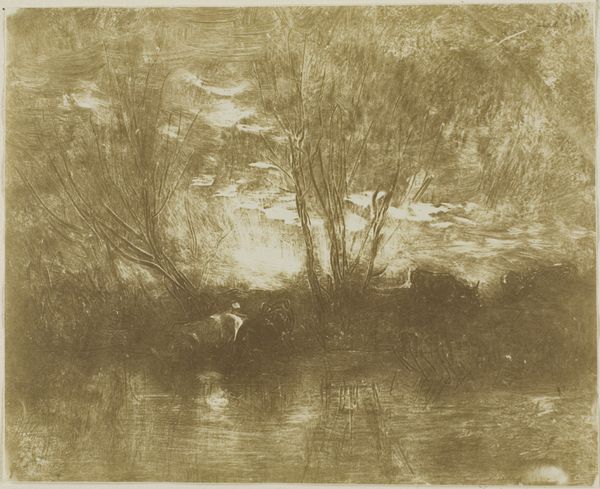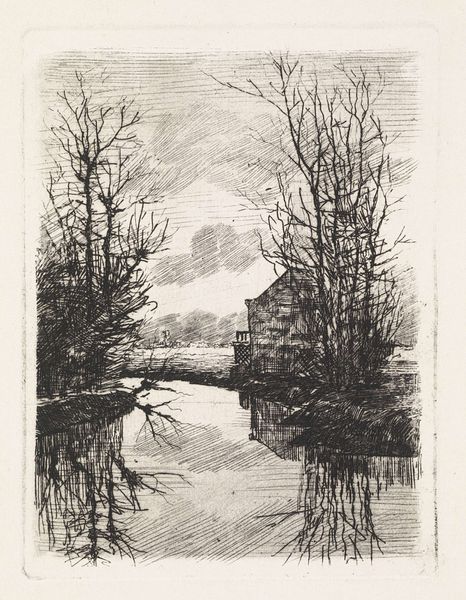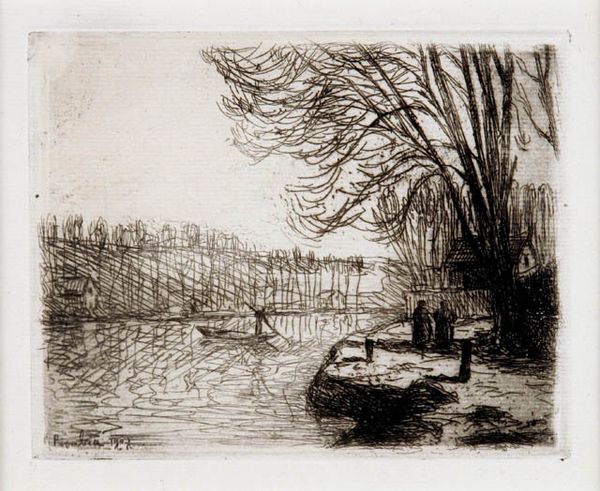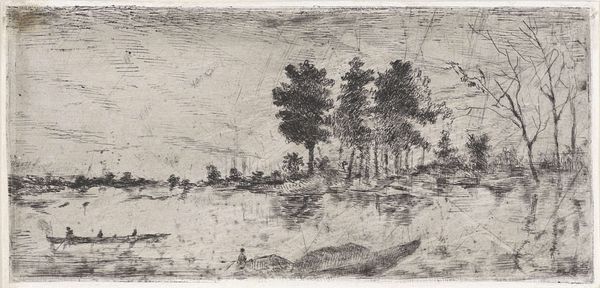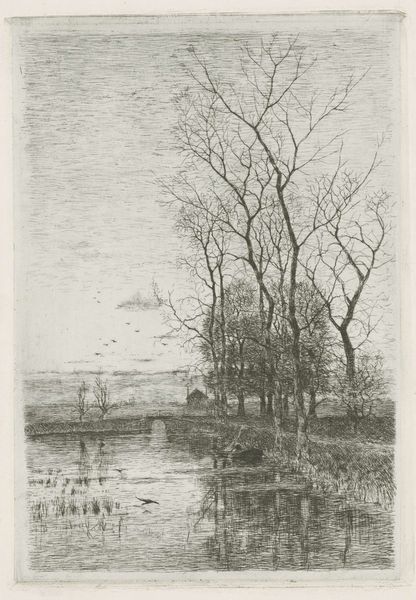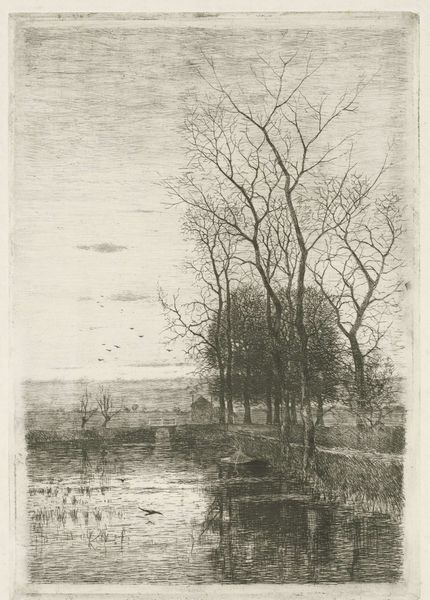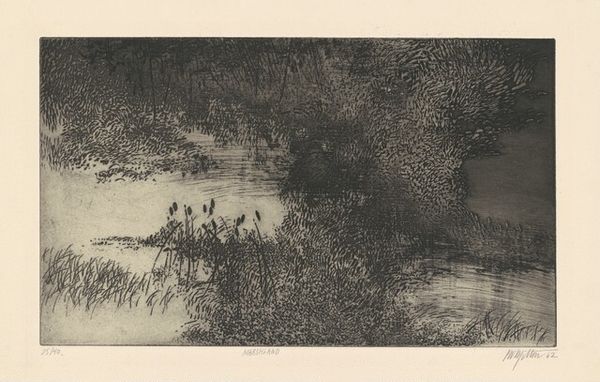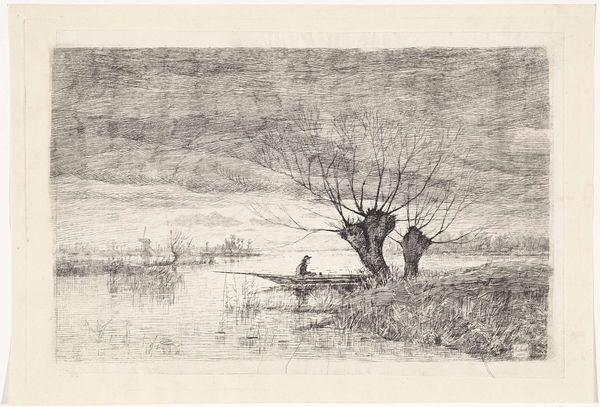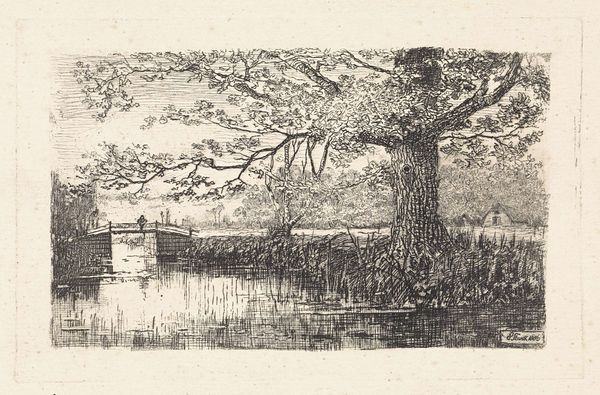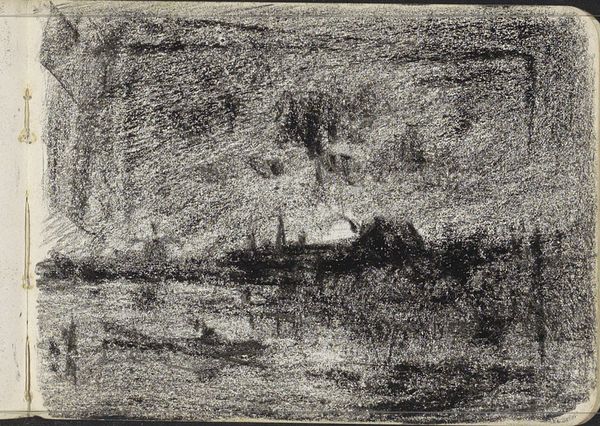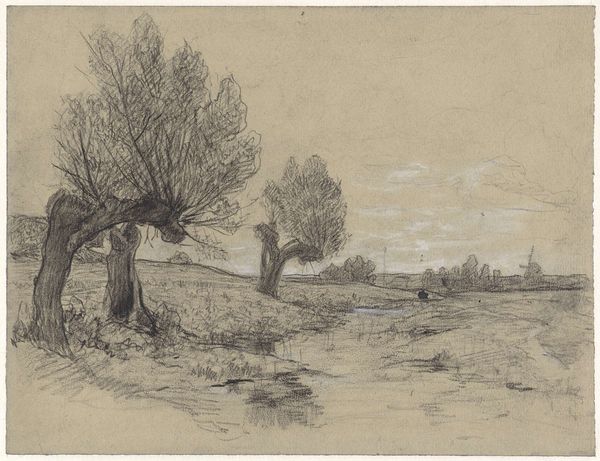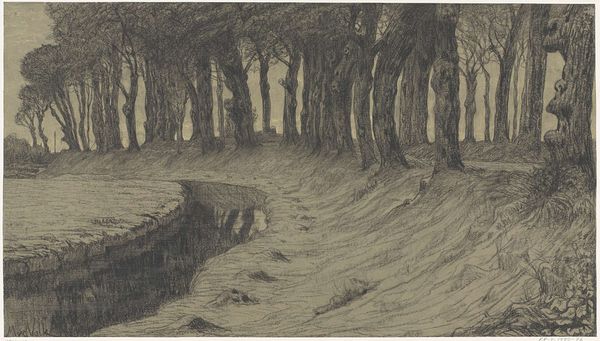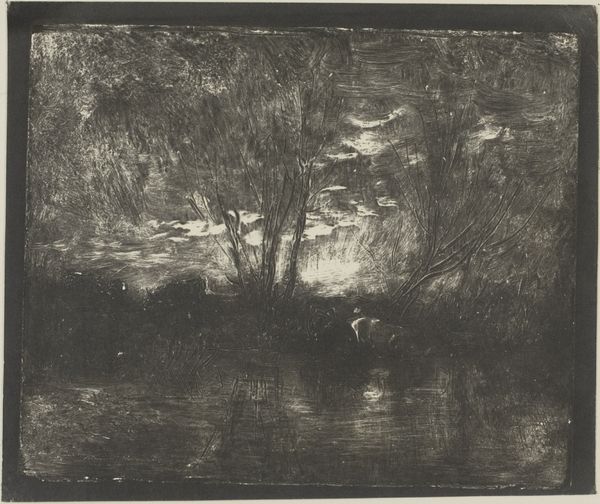
drawing, paper, graphite
#
tree
#
landscape illustration sketch
#
drawing
#
lake
#
landscape
#
paper
#
forest
#
line
#
graphite
#
watercolour illustration
#
watercolor
#
realism
Copyright: Public domain
Curator: Standing before us is Vincent van Gogh's drawing "The Kingfisher," created in 1884. It's rendered in graphite and watercolor on paper. What strikes you most immediately about this seemingly simple landscape sketch? Editor: It’s somber. The brown monochrome palette conveys a melancholy feeling. The materiality appears minimal, a stark contrast to the later works he's celebrated for. Curator: Exactly. Observe the intricate network of lines. They create depth and texture despite the restricted tonal range. The composition is anchored by the reflections in the water, acting as both mirror and visual weight. Notice the meticulous layering of the graphite to convey light, it reminds me of classical landscape traditions. Editor: But let’s think about that restricted palette. Graphite and watercolour were readily available and relatively inexpensive media. Perhaps it reflects constraints. Were these deliberate choices, or dictated by the resources at his disposal at the time? Consider, too, how drawings are essential tools for a painter, not ends unto themselves. Curator: A crucial point. The drawing captures a moment in time. Van Gogh’s concern seems not just descriptive, it goes toward essential constructional components such as structure and form of a scene using delicate visual arrangements. Editor: Consider also the repetitive and textured work of a draughtsman which involves craft labor which demands meticulousness and the kind of patience not always appreciated in rapid industrial capitalist economies that were emerging during the late 19th century. Curator: Yes, looking closely, we can consider its internal relations of line, shape, and tone, revealing the harmony of the overall design. The distant steeple grounds the drawing with a firm assertion, if somewhat softened and hazy. Editor: A visual echo of labor conditions too—hazy!—for so many during his time! So this drawing is both aesthetically interesting but prompts us to examine more material and societal underpinnings and pressures bearing on his aesthetic creation, including even economics! Curator: Indeed. There's something deceptively tranquil, yet analytically sound. Editor: Van Gogh offers an opportunity to explore and question and reflect upon material history. It adds a profound depth and interest when one ponders the physical process required for his art.
Comments
No comments
Be the first to comment and join the conversation on the ultimate creative platform.
